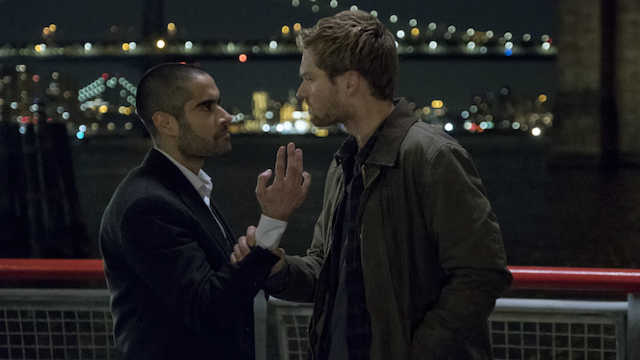While Marvel has been capturing the big screen with its cinematic universe, the Netflix counterpart has been steadily growing as well. Starting from the first season of Daredevil and its success, Netflix has been continuously releasing new series and seasons, introducing new heroes such as Jessica Jones, Luke Cage, and the Iron Fist. The first seasons of Daredevil, Jessica Jones, Luke Cage, and even Punisher all received positive reception, but Iron Fist failed to post an impressive first season and suffered harsh criticism for its slow 13-episode pacing and its weak storytelling and action choreography. However, its sophomore outing, released on September 7, proved to viewers that the show can improve.
The greatest improvement in the second season, without doubt, is the action. The action in the first season was extremely simple and repetitive, making it one of the most criticized aspects of the season. Considering that the Iron Fist’s fighting style is based on Kung Fu and Daredevil’s style is based on boxing, the Iron Fist’s first season’s action was ironically less fancy than Daredevil’s. Thankfully, with the switch of the choreography director, the second season’s action was impressive. By hiring fight choreographer Clayton Barber who also worked on Black Panther, Iron Fist managed to stay true to its Kung Fu-styled action and created memorable fight scenes. For instance, the first season’s one-versus-many fights were silly in that the many would just run in one by one and the main character would disable each enemy with a single punch. This season’s fights against many foes were smooth and realistic. This sort of improvement in the action sequences was necessary not only to make the show more fun to watch, but also to make the main characters more legitimate, which is key for an immersive show.
This improved action sequence was further improved by solving the pacing issue. Most Marvel shows on Netflix have received criticism for their 13-episode format because they are too slow and take at least three to four episodes for viewers to get sucked into the show. Many times, watching a Marvel show feels like a chore for the first few episodes, and thus many viewers give up in the middle. However, Iron Fist’s second season only had 10 episodes, which necessitated more efficient storytelling, hooking in viewers in fewer episodes than before. Although the quality of this season’s storytelling is debatable, the faster pacing with improved action sequences made the show very enjoyable to watch.

However, the fact that a show was enjoyable doesn’t make it immune to criticism of its flaws. One glaring flaw in this season, which also existed in the first season, was the lack of impressive, charming villains. Other Netflix Marvel shows have charming villains who bring more complexity and enjoyability to the narrative. Daredevil had the Kingpin, Jessica Jones had Kilgrave, and Luke Cage had Cottonmouth. While Harold Meachum, the main villain of the first season of Iron Fist, was an interesting one, he failed to be as beguiling as the antagonists of the other shows; to make things worse, the villains in this second season were childish — their evil deeds seemed to be violent tantrums. Davos is as naïve as Danny Rand was in the first season and only manages to get by thanks to his mastery of Kung Fu. Joy Meachum has the most immature reason for her actions, which gives the audience the impression that she is a rich, spoiled brat who is compelled to lash out if someone hurts her feelings. On the other hand, Colleen Wing, Danny Rand’s lover, and Ward Meachum, a secondary villain in the first season, portrayed deep human emotions and decisions, making them some of the joys of the show. However, having main characters with different complexities — some very shallow and some much more deeply portrayed — detracts from the charm that more complex characters have created for the show. This sort of characterization can only be viewed as lazy writing. It seems as if some of the writers in charge cared deeply about some of the characters, but for others they simply didn’t bother.
All in all, the second season of this series manages to address some of the bigger problems the first season had. The new action choreography made the show more interesting and the 10-episode format improved the dragging pacing issue. However, it still has a long way to go to catch up to other Netflix Marvel shows, so hopefully, season three will follow this season’s improvement and become a worthy title in the Netflix Marvel universe. In the end, third time’s the charm, right?

